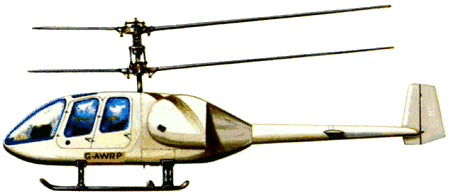
| Cierva CR.LTH-1 "Grasshopper" 1926 |  |
 |

| Cierva CR.LTH-1 "Grasshopper" 1926 |  |
 |
|
Rotorcraft Ltd. was reconstituted as the Cierva Rotorcraft Ltd, subsidiary of The Cierva Autogyro Co, and work commenced on the new "Grasshopper" Mk.III which was based on the dynamic systems of the earlier aircraft, but with a new four-seat fuselage incorporating a slim tailboom with a fin and rudder and powered by two 135hp Rolls-Royce Continental O-300 piston engines. This was designated CR.LTH-1 (otherwise known as the CR-Twin) and the first aircraft, G-AWRP, first flew in 1969 followed by G-AXFM (GB-2) later that year, and a third pre-production machine, G-AZAU (GB-3) in mid-1971. This latter aircraft was fitted with 210hp Continental IO-360-D engines, and the production variants were to be the CR.420 with 210hp Continental TSIO-360-A engines and the CR.640 with 320hp Continental Tiara T6-320 engines. Development was eventually abandoned in 1975 due to lack of further financial backing. R.Simpson "Airlife's Helicopter and Rotorcraft", 1998 
|